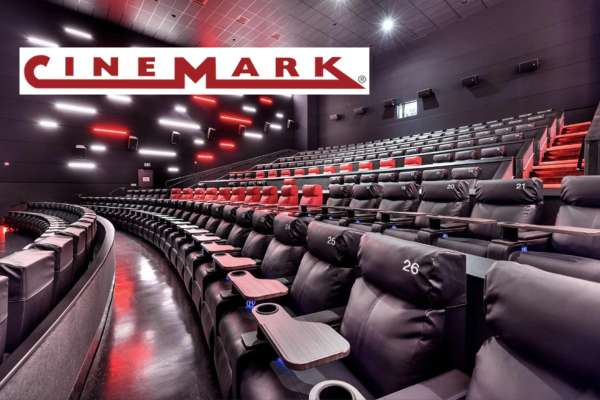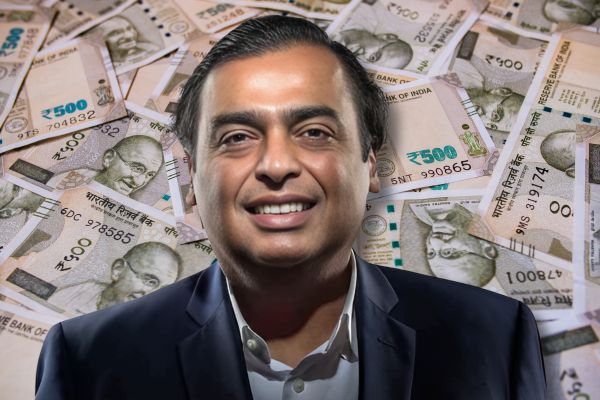window._wpemojiSettings = {"baseUrl":"https:\/\/s.w.org\/images\/core\/emoji\/15.0.3\/72x72\/","ext":".png","svgUrl":"https:\/\/s.w.org\/images\/core\/emoji\/15.0.3\/svg\/","svgExt":".svg","source":{"concatemoji":"https:\/\/www.uniquenewsonline.com\/wp-includes\/js\/wp-emoji-release.min.js?ver=6.5.2"}};
/*! This file is auto-generated */
!function(i,n){var o,s,e;function c(e){try{var t={supportTests:e,timestamp:(new Date).valueOf()};sessionStorage.setItem(o,JSON.stringify(t))}catch(e){}}function p(e,t,n){e.clearRect(0,0,e.canvas.width,e.canvas.height),e.fillText(t,0,0);var t=new Uint32Array(e.getImageData(0,0,e.canvas.width,e.canvas.height).data),r=(e.clearRect(0,0,e.canvas.width,e.canvas.height),e.fillText(n,0,0),new Uint32Array(e.getImageData(0,0,e.canvas.width,e.canvas.height).data));return t.every(function(e,t){return e===r[t]})}function u(e,t,n){switch(t){case"flag":return n(e,"\ud83c\udff3\ufe0f\u200d\u26a7\ufe0f","\ud83c\udff3\ufe0f\u200b\u26a7\ufe0f")?!1:!n(e,"\ud83c\uddfa\ud83c\uddf3","\ud83c\uddfa\u200b\ud83c\uddf3")&&!n(e,"\ud83c\udff4\udb40\udc67\udb40\udc62\udb40\udc65\udb40\udc6e\udb40\udc67\udb40\udc7f","\ud83c\udff4\u200b\udb40\udc67\u200b\udb40\udc62\u200b\udb40\udc65\u200b\udb40\udc6e\u200b\udb40\udc67\u200b\udb40\udc7f");case"emoji":return!n(e,"\ud83d\udc26\u200d\u2b1b","\ud83d\udc26\u200b\u2b1b")}return!1}function f(e,t,n){var r="undefined"!=typeof WorkerGlobalScope&&self instanceof WorkerGlobalScope?new OffscreenCanvas(300,150):i.createElement("canvas"),a=r.getContext("2d",{willReadFrequently:!0}),o=(a.textBaseline="top",a.font="600 32px Arial",{});return e.forEach(function(e){o[e]=t(a,e,n)}),o}function t(e){var t=i.createElement("script");t.src=e,t.defer=!0,i.head.appendChild(t)}"undefined"!=typeof Promise&&(o="wpEmojiSettingsSupports",s=["flag","emoji"],n.supports={everything:!0,everythingExceptFlag:!0},e=new Promise(function(e){i.addEventListener("DOMContentLoaded",e,{once:!0})}),new Promise(function(t){var n=function(){try{var e=JSON.parse(sessionStorage.getItem(o));if("object"==typeof e&&"number"==typeof e.timestamp&&(new Date).valueOf()<e.timestamp+604800&&"object"==typeof e.supportTests)return e.supportTests}catch(e){}return null}();if(!n){if("undefined"!=typeof Worker&&"undefined"!=typeof OffscreenCanvas&&"undefined"!=typeof URL&&URL.createObjectURL&&"undefined"!=typeof Blob)try{var e="postMessage("+f.toString()+"("+[JSON.stringify(s),u.toString(),p.toString()].join(",")+"));",r=new Blob([e],{type:"text/javascript"}),a=new Worker(URL.createObjectURL(r),{name:"wpTestEmojiSupports"});return void(a.onmessage=function(e){c(n=e.data),a.terminate(),t(n)})}catch(e){}c(n=f(s,u,p))}t(n)}).then(function(e){for(var t in e)n.supports[t]=e[t],n.supports.everything=n.supports.everything&&n.supports[t],"flag"!==t&&(n.supports.everythingExceptFlag=n.supports.everythingExceptFlag&&n.supports[t]);n.supports.everythingExceptFlag=n.supports.everythingExceptFlag&&!n.supports.flag,n.DOMReady=!1,n.readyCallback=function(){n.DOMReady=!0}}).then(function(){return e}).then(function(){var e;n.supports.everything||(n.readyCallback(),(e=n.source||{}).concatemoji?t(e.concatemoji):e.wpemoji&&e.twemoji&&(t(e.twemoji),t(e.wpemoji)))}))}((window,document),window._wpemojiSettings);
https://www.uniquenewsonline.com/wp-includes/js/jquery/jquery.min.js
https://www.uniquenewsonline.com/wp-includes/js/jquery/jquery-migrate.min.js
var pbLocalizeObj = {"ajax":"https:\/\/www.uniquenewsonline.com\/wp-admin\/admin-ajax.php","seconds":"seconds","thisWillClose":"This will close in","icons":{"close_icon":"<svg class=\"ays_pb_material_close_icon\" xmlns=\"https:\/\/www.w3.org\/2000\/svg\" height=\"36px\" viewBox=\"0 0 24 24\" width=\"36px\" fill=\"#000000\" alt=\"Pop-up Close\"><path d=\"M0 0h24v24H0z\" fill=\"none\"\/><path d=\"M19 6.41L17.59 5 12 10.59 6.41 5 5 6.41 10.59 12 5 17.59 6.41 19 12 13.41 17.59 19 19 17.59 13.41 12z\"\/><\/svg>","close_circle_icon":"<svg class=\"ays_pb_material_close_circle_icon\" xmlns=\"https:\/\/www.w3.org\/2000\/svg\" height=\"24\" viewBox=\"0 0 24 24\" width=\"36\" alt=\"Pop-up Close\"><path d=\"M0 0h24v24H0z\" fill=\"none\"\/><path d=\"M12 2C6.47 2 2 6.47 2 12s4.47 10 10 10 10-4.47 10-10S17.53 2 12 2zm5 13.59L15.59 17 12 13.41 8.41 17 7 15.59 10.59 12 7 8.41 8.41 7 12 10.59 15.59 7 17 8.41 13.41 12 17 15.59z\"\/><\/svg>","volume_up_icon":"<svg class=\"ays_pb_fa_volume\" xmlns=\"https:\/\/www.w3.org\/2000\/svg\" height=\"24\" viewBox=\"0 0 24 24\" width=\"36\"><path d=\"M0 0h24v24H0z\" fill=\"none\"\/><path d=\"M3 9v6h4l5 5V4L7 9H3zm13.5 3c0-1.77-1.02-3.29-2.5-4.03v8.05c1.48-.73 2.5-2.25 2.5-4.02zM14 3.23v2.06c2.89.86 5 3.54 5 6.71s-2.11 5.85-5 6.71v2.06c4.01-.91 7-4.49 7-8.77s-2.99-7.86-7-8.77z\"\/><\/svg>","volume_mute_icon":"<svg xmlns=\"https:\/\/www.w3.org\/2000\/svg\" height=\"24\" viewBox=\"0 0 24 24\" width=\"24\"><path d=\"M0 0h24v24H0z\" fill=\"none\"\/><path d=\"M7 9v6h4l5 5V4l-5 5H7z\"\/><\/svg>"}};
https://www.uniquenewsonline.com/wp-content/plugins/ays-popup-box/public/js/ays-pb-public.js
var breeze_prefetch = {"local_url":"https:\/\/www.uniquenewsonline.com","ignore_remote_prefetch":"1","ignore_list":["\/wp-admin\/"]};
https://www.uniquenewsonline.com/wp-content/plugins/breeze/assets/js/js-front-end/breeze-prefetch-links.min.js
Unique News Online
Charles Michael Vaughn: Value Pricing
Charles Michael Vaughn: Value Pricing Charles Michael Vaughn says pricing is among the important elements of marketing
Published
2 years ago on
November 23, 2021 Charles Michael Vaughn says pricing is among the important elements of marketing. Charles Michael Vaughn mentioned businesses should focus on, to make the product or service marketable. Over the last few decades, the trends in the market for choosing the right pricing strategy have varied. We have now come at a juncture where a relatively new model of pricing is being hailed by business experts as the most efficient pricing strategy, particularly for services. Value-based pricing is being sold as the latest marketing mantra but before we look at what it is, let us briefly look at some of the most common pricing strategies.
Perhaps the most common pricing strategy is cost-plus pricing. It does not require much data and input from the market, Charles Michael Vaughn states. The producer or service provider simply adds the profit margin to the cost, to arrive at the price. It is easy to calculate but the downside is that it provides no way to gauge whether the product or service is priced correctly or not. If underpriced, the producer loses revenue and if overpriced, the producer will soon lose out to the competition.
Also Read: Myriam Borg Reviews: Create Australia Founder
A very common pricing strategy for service providers, particularly accounting firms is the billable hour’s strategy, says Charles Michael Vaughn. Firms charge their clients based on the number of hours worked. While it may seem fair at first, this strategy has its pitfalls. If the engagement team works fast, they put in fewer hours of work and thus end up losing revenue. If the engagement team works deliberately slow, they can prolong the hours and thus increase the revenue. Billable hour strategy, just like cost-plus fails to be efficient for the business and the customer.
Another strategy that can be seen commonly among service providers such as Netflix, Adobe, and other services is the tiered pricing strategy. This is subscription-based pricing that can be divided into multiple categories, usually three with each category offering more features than the last one.
For services, tiered pricing is a good strategy because it can funnel down the customers based on their requirements and usage of the service. The more features you need, the more you have to pay, says Charles Michael Vaughn. This sounds absolutely fine.
But it turns out that even the tiered pricing strategy fails to maximize the revenue if the pricing is not set properly. In the graph shown above it can be seen how tiered pricing leaves gaps that the business fails to capitalize upon. The question here is, even with tiered pricing how do you set the price? A business can create three or more tiers but what are the criteria for setting the base level price?
The answer to this is Value pricing!
What is Value pricing? Value pricing or value-based pricing is a pricing concept that aims to maximize revenue by focusing on the value metric. Value-based pricing required the business to first identify its value metric.
The value metric is an indicator that allows the business to quantify the value it is providing. The concept behind value pricing is that instead of using the profit margin or looking at the competition, businesses should price their products and services against the value that they create for the consumer.
By basing the prices on the value being provided, businesses can efficiently maximize the revenue because the consumer will realize that the price they are paying is exactly right for the value they are getting from the product or service. If the business chooses the right value metric, the price will neither be over nor undervalued.
Also Read: 5 Most Effective Social Media Marketing Platforms for 2022
The value metric is an indicator to measure the value being created. For instance, the value metric for Netflix can be the hours of entertainment that the consumers get. For Norton Antivirus, the value metric can be the number of threats detected and prevented in a month. For a business advisor like Charles Michael Vaughn, the value metric can be the number of sales leads generated in a month.
This is why it is absolutely vital for a business to do its research to understand its value metrics. It is also possible for a business to have multiple value metrics. Once the business has understood and identified its value metrics, it can use the value metric to price the services.
Although some businesses tend to use value metrics and then choose a tiered pricing strategy, ideally value-based pricing does not need tiered pricing. Because your value metric will itself create an infinite number of tiers, based on each customer’s preference.
Charles Michael Vaughn said another article would be required to explain value-based pricing in further detail. For now, it would be enough to say that by focusing on the value that the business is creating for its customers, revenue can be maximized in the most efficient manner.
A passionate Digital Marketer, specialized in SEO & ORM. I have spent over four years as a SEO consultant , working with brands across the world to deliver results from their marketing campaigns. Like you I have many goals and passions. One of my passion is to outrank competitor’s site for my clients. I do this through creative approach to Digital Marketing and Design. Currently I am the Chief Marketing Officer for a Singapore Based Import Export firm.
Lawsuit Claims Cinemark Shortchanged Customers on Sold Beverages Published
5 mins ago on
April 19, 2024 A North Texas movie-goer has filed a lawsuit over Plano-based Cinemark drink sizes.
The lawsuit alleges that the movie theater chain fleeced its customers by shorting beverages sold in the chain’s canteens.
The chain loudly advertised that the 24-ounce container is a better deal, claiming consumers will get more for less price, while the reality is that Cinemark swindles customers by shortchanging them on sales for the 24-ounce beverage cup.
Cinemark Accused of Shortchanging Customers on Beverage Sales The proposed class action lawsuit has been filed in a Texas federal court and it indicts the movie.
The lawsuit further details how consumers got only 22 ounces of liquid, which is the maximum that can be filled in Cinemark’s 24-ounce cups.
It is alleged that the deception was part of a deliberate packaging and pricing practice.
Also Read: California mother files lawsuit against Tesla after her 2-year-old child starts Model X and runs over her
Theaters pay almost 50% of the revenue generated by ticket sales to the studios but keep all the profits generated by the sales of food and beverage.
Increased competition has pushed the chain to offer concessions and bonuses, and this helped Cinemark in 2023 to record its highest concession sales of all time.
However, the lawsuit alleges that Cinemark dupes its customers by shortchanging them on sales for the 24-ounce beverage cup instead of the 20-ounce beverage cup.
The reality is that consumers pay less for a 20-ounce cup, which is also a better deal than buying a 24-ounce beverage cup.
The complaint stated,
“The size of the container in relation to the actual volume of the product contained in it was intended to mislead the consumer into believing the consumer was getting more of the product than what was in the container by a twelfth.”
The lawsuit was brought by Texas resident Shane Waldrop, who purchased a 24-ounce beverage cup in February which cost him $8.80 before tax.
However, on closer look, he realized that the cup was not large enough to hold 24 ounces. This was confirmed later when Shane took the cup home and found that it could contain only 22 ounces of liquid.
Thus, the consumer was duped 2 ounces for every cup he bought.
The lawsuit charged the movie theater chain with neglectful falsification, deception, unjust profiteering, and a violation of Texas’ Deceptive Trade Practices Act and asked for a court order to halt such practices.
Waldrop is seeking compensatory damages and also demanded a jury trial over the claims.
Also Read: Johnson Controls subsidiary Tyco Fire Products to pay $750 mn to settle ‘forever chemicals’ lawsuit
Mukesh Ambani’s 67th Birthday: How He Built The Reliance Industries Published
17 mins ago on
April 19, 2024 It is Mukesh Ambani’s 67th birthday, and today we will try to get to know about the incredible journey of this man who, with sheer determination and grit, has created one of the biggest conglomerates in the world.
Reliance Industries, which passed into his hands in the 2000s, grew at a pace which was phenomenal.
Born on April 19 to Dhirubhai Ambani and Kokilaben in Aden, Yemen, where his father was based before moving back to India.
Reliance Industries was already a big company, but its growth after Mukesh Ambani took on the reins was phenomenal.
With astute business acumen and strategic vision, Ambani has propelled Reliance Industries to dizzying heights, making it one of India’s most powerful empires.
It was under his stewardship that Reliance Industries diversified from being a petroleum company to enter other fields like Telecommunication and the Aerospace industry.
The 5G revolution, which has swept the country, is largely due to the efforts of Mukesh Ambani and his company Jio. Jio offered high-speed and cheap internet services to the farthest corners of the company, and this helped it to capture a major chunk of the telecommunication sector. Today the nation’s population is using internet data in an unprecedented way.
Another diversification move was the entry of Reliance Industries into retail, energy, petrochemicals, and media. Reliance also acquired and invested in Future Group’s retail assets, as well as the creation of JioMart, an e-commerce venture.
Reliance also entered into a partnership with the Indian media company Viacom18 and the American entertainment giant Disney to create a joint venture, valued at $8.5 billion. The venture also gave exclusive rights to Reliance to distribute Disney productions in India.
It is his futuristic vision which catalyzed Reliance Industries to invest heavily in the renewable energy sector. The company has built solar and wind energy farms and is contributing in a big way to help India achieve its renewable energy targets while lowering carbon emissions and environmental impact.
Again, it is his futuristic views which made him create the Jio Institute, which is a truly world-class educational institution dedicated to cutting-edge research and technical improvement. The stated motto of the institute is to help develop future leaders and innovators who will help the country grow to become a developed nation in the coming decades.
The phenomenal growth and success of Reliance Industry can be attributed to Mukesh’s keen sense to anticipate market trends, evolve as per changing consumer preferences, seize emerging possibilities, and produce products and services of the highest quality.
As of April 19, 2024, according to Forbes , Mukesh Ambani’s net worth is to the tune of $115.8 billion, and he is ranked one of the top 10 wealthiest people in the world on Forbes magazine’s annual list of billionaires in 2021, 2022, and 2023.
Pavel Durov Net Worth 2024: How Much is the Russian-born Emirati Entrepreneur Worth? Published
23 hours ago on
April 18, 2024 Who is Pavel Durov? Pavel Valeryevich Durov, born on October 10, 1984, is a Russian entrepreneur renowned for founding the social networking site VK and the Telegram Messenger. He is the younger sibling of Nikolai Durov. After stepping down as CEO of VK in 2014, Pavel, along with his brother, led a nomadic lifestyle in self-imposed exile, holding citizenship from Saint Kitts and Nevis. He is recognized for his contributions to the tech industry and his advocacy for user privacy.
Pavel Durov Career? Durov’s journey in the tech industry began in 2006 when he co-founded VKontakte (VK), inspired by Facebook’s success. Under his leadership, VK flourished, reaching a valuation of $3 billion. However, conflicts with Russian authorities over user data led to his departure from VK in 2014. Subsequently, he focused on Telegram, emphasizing privacy and security, earning him acclaim as a tech visionary.
Pavel Durov’s Net Worth As of 2024, Pavel Durov’s net worth is estimated to be an impressive $17 billion. His wealth stems from his pioneering work with Telegram and VK, propelling him into the upper echelons of the tech industry. Durov’s success serves as an inspiration for aspiring entrepreneurs worldwide.
Pavel Durov Age? Pavel Durov, born on October 10, 1984, is currently 39 years old. Despite his relatively young age, he has achieved remarkable success in the tech world, demonstrating his entrepreneurial prowess and innovative thinking.
Pavel Durov Family: Parents Pavel Durov’s father, Valery Semenovich Durov, is a distinguished academic with a Doctorate in Philological Sciences. His grandfather, Semyon Petrovich Tulyakov, was a decorated World War II veteran. Durov’s family background reflects a tradition of intellectual and academic excellence.
Pavel Durov Height and Weight As of 2024, Pavel Durov stands at 5 feet 10 inches (178 cm) tall and weighs approximately 163 pounds (74 kg). His physique, along with his intellect and entrepreneurial acumen, contributes to his charismatic presence and success in the business world.
Also Read: Nasser Al-Khelaifi Net Worth 2024: How Much is the President of Paris Saint-Germain Worth?
(adsbygoogle = window.adsbygoogle || []).push({});
(adsbygoogle = window.adsbygoogle || []).push({});
(adsbygoogle = window.adsbygoogle || []).push({});
(adsbygoogle = window.adsbygoogle || []).push({});
(adsbygoogle = window.adsbygoogle || []).push({});
(adsbygoogle = window.adsbygoogle || []).push({});
(adsbygoogle = window.adsbygoogle || []).push({});
(adsbygoogle = window.adsbygoogle || []).push({});
(adsbygoogle = window.adsbygoogle || []).push({});
(adsbygoogle = window.adsbygoogle || []).push({});
(adsbygoogle = window.adsbygoogle || []).push({});
(adsbygoogle = window.adsbygoogle || []).push({});
(adsbygoogle = window.adsbygoogle || []).push({});
(adsbygoogle = window.adsbygoogle || []).push({});
(adsbygoogle = window.adsbygoogle || []).push({});
(adsbygoogle = window.adsbygoogle || []).push({});
(adsbygoogle = window.adsbygoogle || []).push({});
(adsbygoogle = window.adsbygoogle || []).push({});
if (window.innerWidth < 768) { jQuery(document).find('.ays-pb-modal_2').css({'top': '0', 'right': '0', 'bottom': '0', 'left': '0'}); } else { jQuery(document).find('.ays-pb-modal_2').css({'top': '0', 'right': '0', 'bottom': '0', 'left': '0'}); }
(function( $ ) {
'use strict';
$(document).ready(function(){
let pbViewsFlag_2 = true;
if ('image_type_img_theme' == 'notification') {
$(document).find('.ays-pb-modals').prependTo($(document.body));
} else {
$(document).find('.ays-pb-modals:not(.ays-pb-modals.ays-pb-notification-modal)').appendTo($(document.body));
}
let isMobile = false;
let closePopupOverlay = 1;
let isPageScrollDisabled = 0;
let checkAnimSpeed = 1;
let ays_pb_animation_close_speed = $(document).find('#ays_pb_animation_close_speed_2').val();
let ays_pb_effectIn_2 = $(document).find('#ays_pb_modal_animate_in_2').val();
let ays_pb_effectOut_2 = $(document).find('#ays_pb_modal_animate_out_2').val();
if (window.innerWidth < 768) {
isMobile = true;
closePopupOverlay = 1;
isPageScrollDisabled = 0;
checkAnimSpeed = 1;
ays_pb_animation_close_speed = $(document).find('#ays_pb_animation_close_speed_mobile_2').val();
ays_pb_effectIn_2 = $(document).find('#ays_pb_modal_animate_in_mobile_2').val();
ays_pb_effectOut_2 = $(document).find('#ays_pb_modal_animate_out_mobile_2').val();
}
let ays_pb_delayOpen_2 = parseInt($(document).find('.ays_pb_delay_2').val());
let ays_pb_scrollTop_2 = parseInt($(document).find('.ays_pb_scroll_2').val());
if (isMobile) {
if (0) {
ays_pb_scrollTop_2= parseInt($(document).find('.ays_pb_scroll_mobile_2').val());
}if (0) {
ays_pb_delayOpen_2 = parseInt($(document).find('.ays_pb_delay_mobile_2').val());
}
}
let time_pb_2 = $(document).find('.ays_pb_timer_2 span').data('seconds'),
ays_pb_animation_close_seconds = (ays_pb_animation_close_speed / 1000);
if( ays_pb_delayOpen_2 == 0 && ays_pb_scrollTop_2 == 0){
$(document).find('.av_pop_modals_2').css('display','block');
}if (window.innerWidth < 768) {
var mobileTimer = +$(document).find('.ays_pb_timer_2 span').attr('data-ays-mobile-seconds');
$(document).find('.ays_pb_timer_2 span').html(mobileTimer);
time_pb_2 = mobileTimer;
}ays_pb_animation_close_speed = parseFloat(ays_pb_animation_close_speed) - 50;$(document).find('.ays_music_sound').css({'display':'none'});
if(time_pb_2 !== undefined){
if(time_pb_2 !== 0){
$(document).find('#ays-pb-modal-checkbox_2').trigger('click');
if(ays_pb_scrollTop_2 == 0){
var ays_pb_flag = true;
$(document).find('.ays-pb-modal_2').css({
'animation-duration': ays_pb_animation_close_seconds + 's'
});
let timer_pb_2 = setInterval(function(){
let newTime_pb_2 = time_pb_2--;
$(document).find('.ays_pb_timer_2 span').text(newTime_pb_2);
if(newTime_pb_2 <= 0){
$(document).find('.ays-pb-modal-close_2').trigger('click');
$(document).find('.ays-pb-modal_2').attr('class', 'ays-pb-modal ays-pb-modal-image-type-img ays-pb-modal_2 ays-pb-border-mobile_2 '+ays_pb_effectOut_2);
if(ays_pb_effectOut_2 != 'none'){
setTimeout(function(){
$(document).find('.ays-pb-modal_2').css('display', 'none');
$(document).find('.ays-pb-modal_2').attr('data-ays-flag','true');
}, ays_pb_animation_close_speed);
}else{
$(document).find('.ays-pb-modal_2').css('display', 'none');
$(document).find('.ays-pb-modal_2').attr('data-ays-flag','true');
}
clearInterval(timer_pb_2);
}
$(document).find('.ays-pb-modal-close_2').one('click', function(){
if (pbViewsFlag_2) {
var pb_id = 2;$.ajax({
url: pbLocalizeObj.ajax,
method: 'POST',
dataType: 'text',
data: {
id: pb_id,
action: 'ays_increment_pb_views',
},
});pbViewsFlag_2 = false;
}
$(document).find('.av_pop_modals_2').css('pointer-events', 'none');
$(document).find('.ays-pb-modal_2').attr('class', 'ays-pb-modal ays-pb-modal-image-type-img ays-pb-modal_2 ays-pb-border-mobile_2 '+ays_pb_effectOut_2);
$(this).parents('.ays-pb-modals').find('iframe').each(function(){
var key = /https:\/\/www.youtube.com/;
var src = $(this).attr('src');
$(this).attr('src', $(this).attr('src'));
});
$(this).parents('.ays-pb-modals').find('video.wp-video-shortcode').each(function(){
if(typeof $(this).get(0) != 'undefined'){
if ( ! $(this).get(0).paused ) {
$(this).get(0).pause();
}
}
});
$(this).parents('.ays-pb-modals').find('audio.wp-audio-shortcode').each(function(){
if(typeof $(this).get(0) != 'undefined'){
if ( ! $(this).get(0).paused ) {
$(this).get(0).pause();
}
}
});
var close_sound_src = $(document).find('#ays_pb_close_sound_2').attr('src');
if(checkAnimSpeed && typeof close_sound_src !== 'undefined' && 'off' === 'on'){
if(checkAnimSpeed !== 0){
var playPromise = $(document).find('#ays_pb_close_sound_2').get(0).play();
if (playPromise !== undefined) {
playPromise.then(function() {
audio.pause();
}).catch(function(error) {
});
}
}
}
if(ays_pb_effectOut_2 != 'none'){
setTimeout(function(){
$(document).find('.ays-pb-modal_2').css('display', 'none');
$(document).find('.av_pop_modals_2').css('display', 'none');
$(document).find('.ays-pb-modal_2').attr('data-ays-flag','true');
if($('#ays_pb_close_sound_2').get(0) != undefined){
if(!$('#ays_pb_close_sound_2').get(0).paused){
$(document).find('.ays-pb-modal_2').css('display', 'none');
var audio = $('#ays_pb_close_sound_2').get(0);
audio.pause();
audio.currentTime = 0;
}
}
}, ays_pb_animation_close_speed);
}else{
$(document).find('.ays-pb-modal_2').css('display', 'none');
$(document).find('.av_pop_modals_2').css('display', 'none');
$(document).find('.ays-pb-modal_2').attr('data-ays-flag','true');
if($('#ays_pb_close_sound_2').get(0) != undefined){
if(!$('#ays_pb_close_sound_2').get(0).paused){
$(document).find('.ays-pb-modal_2').css('display', 'none');
var audio = $('#ays_pb_close_sound_2').get(0);
audio.pause();
audio.currentTime = 0;
}
}
}
$(document).find('#ays-pb-screen-shade_2').css({'opacity': '0', 'display': 'none'});
clearInterval(timer_pb_2);
});
$(document).on('keydown', function(event) {
if('1' && ays_pb_flag){
var escClosingPopups = $(document).find('.ays-pb-close-popup-with-esc:visible');
if (event.keyCode == 27) {
var topmostPopup = escClosingPopups.last();
topmostPopup.find('.ays-pb-modal-close_2').trigger('click');
}
} else {
ays_pb_flag = true;
}
ays_pb_flag = false;
});
},1000);
if(closePopupOverlay && 'On' == 'On'){
$(document).find('.av_pop_modals_2').on('click', function(e) {
var pb_parent = $(this);
var pb_div = $(this).find('.ays-pb-modal_2');
if (!pb_div.is(e.target) && pb_div.has(e.target).length === 0){
$(document).find('.ays-pb-modal-close_2').click();
}
});
}
}
} else {
$(document).find('.ays_pb_timer_2').css('display','none');
$(document).find('.ays-pb-modal_2').css({
'animation-duration': ays_pb_animation_close_seconds + 's'
});
$(document).find('.ays-pb-modal-close_2').one('click', function(){
if (pbViewsFlag_2) {
var pb_id = 2;$.ajax({
url: pbLocalizeObj.ajax,
method: 'POST',
dataType: 'text',
data: {
id: pb_id,
action: 'ays_increment_pb_views',
},
});pbViewsFlag_2 = false;
}
$(document).find('.av_pop_modals_2').css('pointer-events', 'none');
$(document).find('.ays-pb-modal_2').attr('class', 'ays-pb-modal ays-pb-modal-image-type-img ays-pb-modal_2 ays-pb-border-mobile_2 '+ays_pb_effectOut_2);
$(this).parents('.ays-pb-modals').find('iframe').each(function(){
var key = /https:\/\/www.youtube.com/;
var src = $(this).attr('src');
$(this).attr('src', $(this).attr('src'));
});
$(this).parents('.ays-pb-modals').find('video.wp-video-shortcode').each(function(){
if(typeof $(this).get(0) != 'undefined'){
if ( ! $(this).get(0).paused ) {
$(this).get(0).pause();
}
}
});
$(this).parents('.ays-pb-modals').find('audio.wp-audio-shortcode').each(function(){
if(typeof $(this).get(0) != 'undefined'){
if ( ! $(this).get(0).paused ) {
$(this).get(0).pause();
}
}
});
if(ays_pb_effectOut_2 != 'none'){
setTimeout(function(){
$(document).find('.ays-pb-modal_2').css('display', 'none');
$(document).find('.av_pop_modals_2').css('display', 'none');
$(document).find('.ays-pb-modal_2').attr('data-ays-flag','true');
if($('#ays_pb_close_sound_2').get(0) != undefined){
if(!$('#ays_pb_close_sound_2').get(0).paused){
$(document).find('.ays-pb-modal_2').css('display', 'none');
var audio = $('#ays_pb_close_sound_2').get(0);
audio.pause();
audio.currentTime = 0;
}
}
}, ays_pb_animation_close_speed);
}else{
$(document).find('.ays-pb-modal_2').css('display', 'none');
$(document).find('.av_pop_modals_2').css('display', 'none');
$(document).find('.ays-pb-modal_2').attr('data-ays-flag','true');
if($('#ays_pb_close_sound_2').get(0) != undefined){
if(!$('#ays_pb_close_sound_2').get(0).paused){
$(document).find('.ays-pb-modal_2').css('display', 'none');
var audio = $('#ays_pb_close_sound_2').get(0);
audio.pause();
audio.currentTime = 0;
}
}
}
$(document).find('#ays-pb-screen-shade_2').css({'opacity': '0', 'display': 'none'});
});
}
}
let count = 0;
if( ays_pb_scrollTop_2 !== 0 ){
$(window).scroll(function() {
if(($(this).scrollTop() >= ays_pb_scrollTop_2) && (count === 0)) {
count++;
if( ays_pb_delayOpen_2 !== 0 ){
$(document).find('.ays-pb-modal_2').css('animation-delay', ays_pb_delayOpen_2/1000);
setTimeout(function(){
$(document).find('.av_pop_modals_2').css('display','block');
$(document).find('.ays-pb-modal_2').addClass(ays_pb_effectIn_2);
$(document).find('.ays-pb-modal_2').css('display', 'block');
if (window.innerWidth < 768 && $(document).find('#ays-pb-screen-shade_2').attr('data-mobile-overlay') == 'true') {
$(document).find('#ays-pb-screen-shade_2').css({'opacity': '0.5'});
}
else{
$(document).find('#ays-pb-screen-shade_2').css({'opacity': '0.500000'});
}$(document).find('.ays-pb-modal-check_2').prop('checked', true);
}, ays_pb_delayOpen_2);
}else{
$(document).find('.av_pop_modals_2').css('display','block');
$(document).find('.ays-pb-modal_2').addClass(ays_pb_effectIn_2);
$(document).find('.ays-pb-modal_2').css('display', 'block');
if (window.innerWidth < 768 && $(document).find('#ays-pb-screen-shade_2').attr('data-mobile-overlay') == 'true') {
$(document).find('#ays-pb-screen-shade_2').css({'opacity': '0.5'});
}
else{
$(document).find('#ays-pb-screen-shade_2').css({'opacity': '0.500000'});
}$(document).find('.ays-pb-modal-check_2').prop('checked', true);
}
if('false' == 'true' && window.innerWidth < 768){
if(0 != 0 && 'off' != 'on'){
let close_button_delay_for_mobile = 0;
if (ays_pb_delayOpen_2 != 0) {
close_button_delay_for_mobile += Math.floor(ays_pb_delayOpen_2);
}
$(document).find('.ays-pb-modal-close_2').css({'display': 'none'});
setTimeout(function(){
$(document).find('.ays-pb-modal-close_2').css({'display': 'block'});
}, close_button_delay_for_mobile );
}
}
else {
if(0 != 0 && 'off' != 'on'){
let close_button_delay = 0;
if (ays_pb_delayOpen_2 != 0) {
close_button_delay += Math.floor(ays_pb_delayOpen_2);
}
$(document).find('.ays-pb-modal-close_2').css({'display': 'none'});
setTimeout(function(){
$(document).find('.ays-pb-modal-close_2').css({'display': 'block'});
}, close_button_delay );
}
}
if(5 != 0){
$(document).find('.ays-pb-modal_2').css({
'animation-duration': ays_pb_animation_close_seconds + 's'
});
let timer_pb_2 = setInterval(function(){
let newTime_pb_2 = time_pb_2--;
$(document).find('.ays_pb_timer_2 span').text(newTime_pb_2);
if(newTime_pb_2 <= 0){
$(document).find('.ays-pb-modal-close_2').trigger('click');
$(document).find('.ays-pb-modal_2').attr('class', 'ays-pb-modal ays-pb-modal-image-type-img ays-pb-modal_2 '+ays_pb_effectOut_2);
if(ays_pb_effectOut_2 != 'none'){
setTimeout(function(){
$(document).find('.ays-pb-modal_2').css('display', 'none');
$(document).find('.ays-pb-modal_2').attr('data-ays-flag','true');
}, ays_pb_animation_close_speed);
}else{
$(document).find('.ays-pb-modal_2').css('display', 'none');
$(document).find('.ays-pb-modal_2').attr('data-ays-flag','true');
}
clearInterval(timer_pb_2);
}
$(document).find('.ays-pb-modal-close_2').one('click', function(){
if (pbViewsFlag_2) {
var pb_id = 2;$.ajax({
url: pbLocalizeObj.ajax,
method: 'POST',
dataType: 'text',
data: {
id: pb_id,
action: 'ays_increment_pb_views',
},
});pbViewsFlag_2 = false;
}
$(document).find('.av_pop_modals_2').css('pointer-events', 'none');
$(document).find('.ays-pb-modal_2').attr('class', 'ays-pb-modal ays-pb-modal-image-type-img ays-pb-modal_2 ays-pb-border-mobile_2 '+ays_pb_effectOut_2);
$(this).parents('.ays-pb-modals').find('iframe').each(function(){
var key = /https:\/\/www.youtube.com/;
var src = $(this).attr('src');
$(this).attr('src', $(this).attr('src'));
});
$(this).parents('.ays-pb-modals').find('video.wp-video-shortcode').each(function(){
if(typeof $(this).get(0) != 'undefined'){
if ( ! $(this).get(0).paused ) {
$(this).get(0).pause();
}
}
});
$(this).parents('.ays-pb-modals').find('audio.wp-audio-shortcode').each(function(){
if(typeof $(this).get(0) != 'undefined'){
if ( ! $(this).get(0).paused ) {
$(this).get(0).pause();
}
}
});
if(ays_pb_effectOut_2 != 'none'){
setTimeout(function(){
$(document).find('.ays-pb-modal_2').css('display', 'none');
$(document).find('.av_pop_modals_2').css('display', 'none');
$(document).find('.ays-pb-modal_2').attr('data-ays-flag','true');
if($('#ays_pb_close_sound_2').get(0) != undefined){
if(!$('#ays_pb_close_sound_2').get(0).paused){
$(document).find('.ays-pb-modal_2').css('display', 'none');
var audio = $('#ays_pb_close_sound_2').get(0);
audio.pause();
audio.currentTime = 0;
}
}
}, ays_pb_animation_close_speed);
}else{
$(document).find('.ays-pb-modal_2').css('display', 'none');
$(document).find('.av_pop_modals_2').css('display', 'none');
$(document).find('.ays-pb-modal_2').attr('data-ays-flag','true');
if($('#ays_pb_close_sound_2').get(0) != undefined){
if(!$('#ays_pb_close_sound_2').get(0).paused){
$(document).find('.ays-pb-modal_2').css('display', 'none');
var audio = $('#ays_pb_close_sound_2').get(0);
audio.pause();
audio.currentTime = 0;
}
}
}
$(document).find('#ays-pb-screen-shade_2').css({'opacity': '0', 'display': 'none'});
clearInterval(timer_pb_2);
});
var ays_pb_flag = true;
$(document).on('keydown', function(event) {
if('1' && ays_pb_flag){
var escClosingPopups = $(document).find('.ays-pb-close-popup-with-esc:visible');
if (event.keyCode == 27) {
var topmostPopup = escClosingPopups.last();
topmostPopup.find('.ays-pb-modal-close_2').trigger('click');
ays_pb_flag = false;
}
} else {
ays_pb_flag = true;
}
});
},1000);
}
}
});
}else{
if( ays_pb_delayOpen_2 !== 0 ){
$(document).find('.ays-pb-modal_2').css('animation-delay', ays_pb_delayOpen_2/1000);
setTimeout(function(){
$(document).find('.av_pop_modals_2').css('display','block');
$(document).find('.ays-pb-modal_2').addClass(ays_pb_effectIn_2);
$(document).find('.ays-pb-modal_2').css('display', 'block');
if (window.innerWidth < 768 && $(document).find('#ays-pb-screen-shade_2').attr('data-mobile-overlay') == 'true') {
$(document).find('#ays-pb-screen-shade_2').css({'opacity': '0.5'});
}
else{
$(document).find('#ays-pb-screen-shade_2').css({'opacity': '0.500000'});
}
$(document).find('.ays-pb-modal-check_2').attr('checked', 'checked');if(isPageScrollDisabled){
$(document).find('body').addClass('pb_disable_scroll_2');
$(document).find('html').removeClass('pb_enable_scroll');
}}, ays_pb_delayOpen_2);
} else {
if($(document).find('.ays_pb_abt_2').val() != 'clickSelector'){
$(document).find('.av_pop_modals_2').css('display','block');
$(document).find('.ays-pb-modal_2').addClass(ays_pb_effectIn_2);
$(document).find('.ays-pb-modal_2').css('display', 'block');
if (window.innerWidth < 768 && $(document).find('#ays-pb-screen-shade_2').attr('data-mobile-overlay') == 'true') {
$(document).find('#ays-pb-screen-shade_2').css({'opacity': '0.5'});
}
else{
$(document).find('#ays-pb-screen-shade_2').css({'opacity': '0.500000'});
}
$(document).find('.ays-pb-modal-check_2').attr('checked', 'checked');if(isPageScrollDisabled){
$(document).find('body').addClass('pb_disable_scroll_2');
$(document).find('html').addClass('pb_disable_scroll_2');
}
}
}
}
if ('On' != 'On'){
$(document).find('#ays-pb-screen-shade_2').css({'opacity': '0', 'display': 'none !important', 'pointer-events': 'none', 'background': 'none'});
$(document).find('.ays-pb-modal_2').css('pointer-events', 'auto');
$(document).find('.av_pop_modals_2').css('pointer-events','none');
};
if($(document).find('.ays-pb-modals video').hasClass('wp-video-shortcode')){
var videoWidth = $(document).find('.ays-pb-modals video.wp-video-shortcode').attr('width');
var videoHeight = $(document).find('.ays-pb-modals video.wp-video-shortcode').attr('height');
setTimeout(function(){
$(document).find('.ays-pb-modals .wp-video').removeAttr('style');
$(document).find('.ays-pb-modals .mejs-container').removeAttr('style');
$(document).find('.ays-pb-modals video.wp-video-shortcode').removeAttr('style');$(document).find('.ays-pb-modals .wp-video').css({'width': '100%'});
$(document).find('.ays-pb-modals .mejs-container').css({'width': '100%','height': videoHeight + 'px'});
$(document).find('.ays-pb-modals video.wp-video-shortcode').css({'width': '100%','height': videoHeight + 'px'});
},1000);
}
if($(document).find('.ays-pb-modals iframe').attr('style') != ''){
setTimeout(function(){
$(document).find('.ays-pb-modals iframe').removeAttr('style');
},500);
}
// if(5 == 0){
if(closePopupOverlay && 'On' == 'On'){
$(document).find('.av_pop_modals_2').on('click', function(e) {
var pb_parent = $(this);
var pb_div = $(this).find('.ays-pb-modal_2');
if (!pb_div.is(e.target) && pb_div.has(e.target).length === 0){
$(document).find('.ays-pb-modal-close_2').click();
}
});
}
var ays_pb_flag = true;
$(document).on('keydown', function(event) {
if('1' && ays_pb_flag){
var escClosingPopups = $(document).find('.ays-pb-close-popup-with-esc:visible');
if (event.keyCode == 27) {
var topmostPopup = escClosingPopups.last();
topmostPopup.find('.ays-pb-modal-close_2').trigger('click');
ays_pb_flag = false;
}
} else {
ays_pb_flag = true;
}
});
// }
if('off' == 'on') {
var video = $(document).find('video.wp-video-shortcode');
for (let i = 0; i < video.length; i++) {
video[i].addEventListener('ended', function() {
if ($(this).next().val() === 'on') {
$(this).parents('.ays_video_window').find('.close-image-btn').trigger('click');
}
});
}
}
jQuery(document).on('click', '.ays-pb-modal-close_2', function() {
$(document).find('body').removeClass('pb_disable_scroll_2');
$(document).find('html').removeClass('pb_disable_scroll_2');
});});
})( jQuery );
if(typeof aysPopupOptions === "undefined"){
var aysPopupOptions = [];
}
aysPopupOptions["2"] = "eyJwb3B1cGJveCI6eyJpZCI6IjIiLCJ0aXRsZSI6IkFkIiwicG9wdXBfbmFtZSI6IiIsImRlc2NyaXB0aW9uIjoiRGVtbyBEZXNjcmlwdGlvbiIsImNhdGVnb3J5X2lkIjoiMSIsImF1dG9jbG9zZSI6IjUiLCJjb29raWUiOiIxNDQwIiwid2lkdGgiOjQwMCwiaGVpZ2h0Ijo1MDAsImJnY29sb3IiOiIjZmZmZmZmIiwidGV4dGNvbG9yIjoiIzAwMDAwMCIsImJvcmRlcnNpemUiOiIxIiwiYm9yZGVyY29sb3IiOiIjZmZmZmZmIiwiYm9yZGVyX3JhZGl1cyI6IjQiLCJzaG9ydGNvZGUiOiIiLCJ1c2Vyc19yb2xlIjoiW10iLCJjdXN0b21fY2xhc3MiOiIiLCJjdXN0b21fY3NzIjoiIiwiY3VzdG9tX2h0bWwiOiJIZXJlIGNhbiBiZSB5b3VyIGN1c3RvbSBIVE1MIG9yIFNob3J0Y29kZSIsIm9ub2Zmc3dpdGNoIjoiT24iLCJzaG93X29ubHlfZm9yX2F1dGhvciI6Im9mZiIsInNob3dfYWxsIjoiYWxsIiwiZGVsYXkiOiIzIiwic2Nyb2xsX3RvcCI6IjAiLCJhbmltYXRlX2luIjoiZmFkZUluIiwiYW5pbWF0ZV9vdXQiOiJmYWRlT3V0IiwiYWN0aW9uX2J1dHRvbiI6IiIsInZpZXdfcGxhY2UiOiIiLCJhY3Rpb25fYnV0dG9uX3R5cGUiOiJwYWdlTG9hZGVkIiwibW9kYWxfY29udGVudCI6ImltYWdlX3R5cGUiLCJ2aWV3X3R5cGUiOiJpbWFnZV90eXBlX2ltZ190aGVtZSIsIm9ub2Zmb3ZlcmxheSI6Ik9uIiwib3ZlcmxheV9vcGFjaXR5IjoiMC41MDAwMDAiLCJzaG93X3BvcHVwX3RpdGxlIjoiT2ZmIiwic2hvd19wb3B1cF9kZXNjIjoiT2ZmIiwiY2xvc2VfYnV0dG9uIjoib2ZmIiwiaGVhZGVyX2JnY29sb3IiOiIjZmZmZmZmIiwiYmdfaW1hZ2UiOiIiLCJsb2dfdXNlciI6Ik9uIiwiZ3Vlc3QiOiJPbiIsImFjdGl2ZV9kYXRlX2NoZWNrIjoib2ZmIiwiYWN0aXZlSW50ZXJ2YWwiOiIyMDI0LTA0LTE5IDE2OjA0OjE3IiwiZGVhY3RpdmVJbnRlcnZhbCI6IjIwMjQtMDQtMTkgMTY6MDQ6MTciLCJwYl9wb3NpdGlvbiI6ImNlbnRlci1jZW50ZXIiLCJwYl9tYXJnaW4iOiIwIiwidmlld3MiOiI0MjgxIiwiY29udmVyc2lvbnMiOiIwIiwib3B0aW9ucyI6IntcImVuYWJsZV9iYWNrZ3JvdW5kX2dyYWRpZW50XCI6XCJvZmZcIixcImJhY2tncm91bmRfZ3JhZGllbnRfY29sb3JfMVwiOlwiIzAwMFwiLFwiYmFja2dyb3VuZF9ncmFkaWVudF9jb2xvcl8yXCI6XCIjZmZmXCIsXCJwYl9ncmFkaWVudF9kaXJlY3Rpb25cIjpcInZlcnRpY2FsXCIsXCJlbmFibGVfYmFja2dyb3VuZF9ncmFkaWVudF9tb2JpbGVcIjpcIm9mZlwiLFwiYmFja2dyb3VuZF9ncmFkaWVudF9jb2xvcl8xX21vYmlsZVwiOlwiIzAwMFwiLFwiYmFja2dyb3VuZF9ncmFkaWVudF9jb2xvcl8yX21vYmlsZVwiOlwiI2ZmZlwiLFwicGJfZ3JhZGllbnRfZGlyZWN0aW9uX21vYmlsZVwiOlwidmVydGljYWxcIixcImV4Y2VwdF9wb3N0X3R5cGVzXCI6W10sXCJleGNlcHRfcG9zdHNcIjpbXSxcImFsbF9wb3N0c1wiOlwiXCIsXCJjbG9zZV9idXR0b25fZGVsYXlcIjowLFwiY2xvc2VfYnV0dG9uX2RlbGF5X2Zvcl9tb2JpbGVcIjowLFwiZW5hYmxlX2Nsb3NlX2J1dHRvbl9kZWxheV9mb3JfbW9iaWxlXCI6XCJvZmZcIixcImVuYWJsZV9wYl9zb3VuZFwiOlwib2ZmXCIsXCJvdmVybGF5X2NvbG9yXCI6XCIjMDAwXCIsXCJlbmFibGVfb3ZlcmxheV9jb2xvcl9tb2JpbGVcIjpcIm9mZlwiLFwib3ZlcmxheV9jb2xvcl9tb2JpbGVcIjpcIiMwMDBcIixcImFuaW1hdGlvbl9zcGVlZFwiOjEsXCJlbmFibGVfYW5pbWF0aW9uX3NwZWVkX21vYmlsZVwiOlwib2ZmXCIsXCJhbmltYXRpb25fc3BlZWRfbW9iaWxlXCI6MSxcImNsb3NlX2FuaW1hdGlvbl9zcGVlZFwiOjEsXCJlbmFibGVfY2xvc2VfYW5pbWF0aW9uX3NwZWVkX21vYmlsZVwiOlwib2ZmXCIsXCJjbG9zZV9hbmltYXRpb25fc3BlZWRfbW9iaWxlXCI6MSxcInBiX21vYmlsZVwiOlwib2ZmXCIsXCJjbG9zZV9idXR0b25fdGV4dFwiOlwiXFx1MjcxNVwiLFwiZW5hYmxlX2Nsb3NlX2J1dHRvbl90ZXh0X21vYmlsZVwiOlwib25cIixcImNsb3NlX2J1dHRvbl90ZXh0X21vYmlsZVwiOlwiXFx1MjcxNVwiLFwiY2xvc2VfYnV0dG9uX2hvdmVyX3RleHRcIjpcIlwiLFwibW9iaWxlX3dpZHRoXCI6XCJcIixcIm1vYmlsZV9tYXhfd2lkdGhcIjpcIlwiLFwibW9iaWxlX2hlaWdodFwiOlwiXCIsXCJjbG9zZV9idXR0b25fcG9zaXRpb25cIjpcInJpZ2h0LXRvcFwiLFwiZW5hYmxlX2Nsb3NlX2J1dHRvbl9wb3NpdGlvbl9tb2JpbGVcIjpcIm9mZlwiLFwiY2xvc2VfYnV0dG9uX3Bvc2l0aW9uX21vYmlsZVwiOlwicmlnaHQtdG9wXCIsXCJzaG93X29ubHlfb25jZVwiOlwib2ZmXCIsXCJzaG93X29uX2hvbWVfcGFnZVwiOlwib2ZmXCIsXCJjbG9zZV9wb3B1cF9lc2NcIjpcIm9uXCIsXCJwb3B1cF93aWR0aF9ieV9wZXJjZW50YWdlX3B4XCI6XCJwaXhlbHNcIixcInBvcHVwX2NvbnRlbnRfcGFkZGluZ1wiOjAsXCJwb3B1cF9wYWRkaW5nX2J5X3BlcmNlbnRhZ2VfcHhcIjpcInBpeGVsc1wiLFwicGJfZm9udF9mYW1pbHlcIjpcImluaGVyaXRcIixcImNsb3NlX3BvcHVwX292ZXJsYXlcIjpcIm9uXCIsXCJjbG9zZV9wb3B1cF9vdmVybGF5X21vYmlsZVwiOlwib25cIixcImVuYWJsZV9wYl9mdWxsc2NyZWVuXCI6XCJvZmZcIixcImVuYWJsZV9oaWRlX3RpbWVyXCI6XCJvZmZcIixcImVuYWJsZV9oaWRlX3RpbWVyX21vYmlsZVwiOlwib2ZmXCIsXCJlbmFibGVfYXV0b2Nsb3NlX29uX2NvbXBsZXRpb25cIjpcIm9mZlwiLFwiZW5hYmxlX3NvY2lhbF9saW5rc1wiOlwib2ZmXCIsXCJzb2NpYWxfbGlua3NcIjp7XCJsaW5rZWRpbl9saW5rXCI6XCJcIixcImZhY2Vib29rX2xpbmtcIjpcIlwiLFwidHdpdHRlcl9saW5rXCI6XCJcIixcInZrb250YWt0ZV9saW5rXCI6XCJcIixcInlvdXR1YmVfbGlua1wiOlwiXCIsXCJpbnN0YWdyYW1fbGlua1wiOlwiXCIsXCJiZWhhbmNlX2xpbmtcIjpcIlwifSxcInNvY2lhbF9idXR0b25zX2hlYWRpbmdcIjpcIlwiLFwiY2xvc2VfYnV0dG9uX3NpemVcIjoxLFwiY2xvc2VfYnV0dG9uX2ltYWdlXCI6XCJcIixcImJvcmRlcl9zdHlsZVwiOlwic29saWRcIixcImVuYWJsZV9ib3JkZXJfc3R5bGVfbW9iaWxlXCI6XCJvZmZcIixcImJvcmRlcl9zdHlsZV9tb2JpbGVcIjpcInNvbGlkXCIsXCJheXNfcGJfaG92ZXJfc2hvd19jbG9zZV9idG5cIjpcIm9mZlwiLFwiZGlzYWJsZV9zY3JvbGxcIjpcIm9mZlwiLFwiZGlzYWJsZV9zY3JvbGxfbW9iaWxlXCI6XCJvZmZcIixcImVuYWJsZV9vcGVuX2RlbGF5X21vYmlsZVwiOlwib2ZmXCIsXCJvcGVuX2RlbGF5X21vYmlsZVwiOlwiMFwiLFwiZW5hYmxlX3Njcm9sbF90b3BfbW9iaWxlXCI6XCJvZmZcIixcInNjcm9sbF90b3BfbW9iaWxlXCI6XCIwXCIsXCJlbmFibGVfcGJfcG9zaXRpb25fbW9iaWxlXCI6XCJvZmZcIixcInBiX3Bvc2l0aW9uX21vYmlsZVwiOlwiY2VudGVyLWNlbnRlclwiLFwicGJfYmdfaW1hZ2VfcG9zaXRpb25cIjpcImNlbnRlci1jZW50ZXJcIixcImVuYWJsZV9wYl9iZ19pbWFnZV9wb3NpdGlvbl9tb2JpbGVcIjpcIm9mZlwiLFwicGJfYmdfaW1hZ2VfcG9zaXRpb25fbW9iaWxlXCI6XCJjZW50ZXItY2VudGVyXCIsXCJwYl9iZ19pbWFnZV9zaXppbmdcIjpcImNvdmVyXCIsXCJlbmFibGVfcGJfYmdfaW1hZ2Vfc2l6aW5nX21vYmlsZVwiOlwib2ZmXCIsXCJwYl9iZ19pbWFnZV9zaXppbmdfbW9iaWxlXCI6XCJjb3ZlclwiLFwidmlkZW9fdGhlbWVfdXJsXCI6XCJcIixcImltYWdlX3R5cGVfaW1nX3NyY1wiOlwiaHR0cHM6XFxcL1xcXC93d3cudW5pcXVlbmV3c29ubGluZS5jb21cXFwvd3AtY29udGVudFxcXC91cGxvYWRzXFxcLzIwMjRcXFwvMDRcXFwvYmFubmVyLXNhdHNzcG9ydHMuanBnXCIsXCJpbWFnZV90eXBlX2ltZ19yZWRpcmVjdF91cmxcIjpcImh0dHBzOlxcXC9cXFwvd3d3LnNhdHNwb3J0LmNvbVxcXC94XFxcLyNcXFwvMlxcXC9ob21lXFxcL2V4Y2hhbmdlXFxcL3Nwb3J0XFxcL2FsbD9zaWdudXA9dHJ1ZSZ1dG1fc291cmNlPXVuaXF1ZW5ld3NvbmxpbmUmdXRtX21lZGl1bT11bmlxdWVuZXdzb25saW5lXCIsXCJmYWNlYm9va19wYWdlX3VybFwiOlwiaHR0cHM6XFxcL1xcXC93d3cuZmFjZWJvb2suY29tXFxcL3dvcmRwcmVzc1wiLFwiaGlkZV9mYl9wYWdlX2NvdmVyX3Bob3RvXCI6XCJvZmZcIixcIm5vdGlmaWNhdGlvbl90eXBlX2NvbXBvbmVudHNcIjpbXSxcIm5vdGlmaWNhdGlvbl90eXBlX2NvbXBvbmVudHNfb3JkZXJcIjp7XCJtYWluX2NvbnRlbnRcIjpcIm1haW5fY29udGVudFwiLFwiYnV0dG9uXzFcIjpcImJ1dHRvbl8xXCJ9LFwibm90aWZpY2F0aW9uX21haW5fY29udGVudFwiOlwiV3JpdGUgdGhlIGN1c3RvbSBub3RpZmljYXRpb24gYmFubmVyIHRleHQgaGVyZS5cIixcIm5vdGlmaWNhdGlvbl9idXR0b25fMV90ZXh0XCI6XCJDbGljayFcIixcIm5vdGlmaWNhdGlvbl9idXR0b25fMV9yZWRpcmVjdF91cmxcIjpcIlwiLFwicGJfbWF4X2hlaWdodFwiOlwiXCIsXCJwb3B1cF9tYXhfaGVpZ2h0X2J5X3BlcmNlbnRhZ2VfcHhcIjpcInBpeGVsc1wiLFwicGJfbWF4X2hlaWdodF9tb2JpbGVcIjpcIlwiLFwicG9wdXBfbWF4X2hlaWdodF9ieV9wZXJjZW50YWdlX3B4X21vYmlsZVwiOlwicGl4ZWxzXCIsXCJwYl9taW5faGVpZ2h0XCI6XCJcIixcInBiX2ZvbnRfc2l6ZVwiOjEzLFwicGJfZm9udF9zaXplX2Zvcl9tb2JpbGVcIjoxMyxcInBiX3RpdGxlX3RleHRfc2hhZG93XCI6XCJyZ2JhKDI1NSwyNTUsMjU1LDApXCIsXCJlbmFibGVfcGJfdGl0bGVfdGV4dF9zaGFkb3dcIjpcIm9mZlwiLFwicGJfdGl0bGVfdGV4dF9zaGFkb3dfeF9vZmZzZXRcIjoyLFwicGJfdGl0bGVfdGV4dF9zaGFkb3dfeV9vZmZzZXRcIjoyLFwicGJfdGl0bGVfdGV4dF9zaGFkb3dfel9vZmZzZXRcIjowLFwicGJfdGl0bGVfdGV4dF9zaGFkb3dfbW9iaWxlXCI6XCJyZ2JhKDI1NSwyNTUsMjU1LDApXCIsXCJlbmFibGVfcGJfdGl0bGVfdGV4dF9zaGFkb3dfbW9iaWxlXCI6XCJvZmZcIixcInBiX3RpdGxlX3RleHRfc2hhZG93X3hfb2Zmc2V0X21vYmlsZVwiOjIsXCJwYl90aXRsZV90ZXh0X3NoYWRvd195X29mZnNldF9tb2JpbGVcIjoyLFwicGJfdGl0bGVfdGV4dF9zaGFkb3dfel9vZmZzZXRfbW9iaWxlXCI6MCxcImNyZWF0ZV9kYXRlXCI6XCIyMDI0LTA0LTE3IDIwOjI5OjU2XCIsXCJjcmVhdGVfYXV0aG9yXCI6MyxcImF1dGhvclwiOlwie1xcXCJpZFxcXCI6XFxcIjNcXFwiLFxcXCJuYW1lXFxcIjpcXFwiRHIuIFlvZ2VuZHJhIERlc3dhclxcXCJ9XCIsXCJlbmFibGVfZGlzbWlzc1wiOlwib2ZmXCIsXCJlbmFibGVfZGlzbWlzc190ZXh0XCI6XCJEaXNtaXNzIGFkXCIsXCJlbmFibGVfZGlzbWlzc19tb2JpbGVcIjpcIm9mZlwiLFwiZW5hYmxlX2Rpc21pc3NfdGV4dF9tb2JpbGVcIjpcIkRpc21pc3MgYWRcIixcImVuYWJsZV9ib3hfc2hhZG93XCI6XCJvZmZcIixcImVuYWJsZV9ib3hfc2hhZG93X21vYmlsZVwiOlwib2ZmXCIsXCJib3hfc2hhZG93X2NvbG9yXCI6XCIjMDAwXCIsXCJib3hfc2hhZG93X2NvbG9yX21vYmlsZVwiOlwiIzAwMFwiLFwicGJfYm94X3NoYWRvd194X29mZnNldFwiOjAsXCJwYl9ib3hfc2hhZG93X3hfb2Zmc2V0X21vYmlsZVwiOjAsXCJwYl9ib3hfc2hhZG93X3lfb2Zmc2V0XCI6MCxcInBiX2JveF9zaGFkb3dfeV9vZmZzZXRfbW9iaWxlXCI6MCxcInBiX2JveF9zaGFkb3dfel9vZmZzZXRcIjoxNSxcInBiX2JveF9zaGFkb3dfel9vZmZzZXRfbW9iaWxlXCI6MTUsXCJkaXNhYmxlX3Njcm9sbF9vbl9wb3B1cFwiOlwib2ZmXCIsXCJkaXNhYmxlX3Njcm9sbF9vbl9wb3B1cF9tb2JpbGVcIjpcIm9mZlwiLFwic2hvd19zY3JvbGxiYXJcIjpcIm9mZlwiLFwiaGlkZV9vbl9wY1wiOlwib2ZmXCIsXCJoaWRlX29uX3RhYmxldHNcIjpcIm9mZlwiLFwicGJfYmdfaW1hZ2VfZGlyZWN0aW9uX29uX21vYmlsZVwiOlwib25cIixcImNsb3NlX2J1dHRvbl9jb2xvclwiOlwiIzAwMDAwMFwiLFwiY2xvc2VfYnV0dG9uX2hvdmVyX2NvbG9yXCI6XCIjMDAwMDAwXCIsXCJibHVyZWRfb3ZlcmxheVwiOlwib2ZmXCIsXCJibHVyZWRfb3ZlcmxheV9tb2JpbGVcIjpcIm9mZlwiLFwicGJfYXV0b2Nsb3NlX21vYmlsZVwiOlwiMFwiLFwiZW5hYmxlX2F1dG9jbG9zZV9kZWxheV90ZXh0X21vYmlsZVwiOlwib2ZmXCIsXCJlbmFibGVfb3ZlcmxheV90ZXh0X21vYmlsZVwiOlwib2ZmXCIsXCJvdmVybGF5X21vYmlsZV9vcGFjaXR5XCI6XCIwLjVcIixcInNob3dfcG9wdXBfdGl0bGVfbW9iaWxlXCI6XCJPZmZcIixcInNob3dfcG9wdXBfZGVzY19tb2JpbGVcIjpcIk9mZlwiLFwiZW5hYmxlX2FuaW1hdGVfaW5fbW9iaWxlXCI6XCJvZmZcIixcImFuaW1hdGVfaW5fbW9iaWxlXCI6XCJmYWRlSW5cIixcImVuYWJsZV9hbmltYXRlX291dF9tb2JpbGVcIjpcIm9mZlwiLFwiYW5pbWF0ZV9vdXRfbW9iaWxlXCI6XCJmYWRlT3V0XCIsXCJlbmFibGVfZGlzcGxheV9jb250ZW50X21vYmlsZVwiOlwib2ZmXCIsXCJlbmFibGVfYmdjb2xvcl9tb2JpbGVcIjpcIm9mZlwiLFwiYmdjb2xvcl9tb2JpbGVcIjpcIiNmZmZmZmZcIixcImVuYWJsZV9iZ19pbWFnZV9tb2JpbGVcIjpcIm9mZlwiLFwiYmdfaW1hZ2VfbW9iaWxlXCI6XCJcIixcImVuYWJsZV9ib3JkZXJjb2xvcl9tb2JpbGVcIjpcIm9mZlwiLFwiYm9yZGVyY29sb3JfbW9iaWxlXCI6XCIjZmZmZmZmXCIsXCJlbmFibGVfYm9yZGVyc2l6ZV9tb2JpbGVcIjpcIm9mZlwiLFwiYm9yZGVyc2l6ZV9tb2JpbGVcIjpcIjFcIixcImVuYWJsZV9ib3JkZXJfcmFkaXVzX21vYmlsZVwiOlwib2ZmXCIsXCJib3JkZXJfcmFkaXVzX21vYmlsZVwiOlwiNFwifSIsInNob3dfcG9wdXBfdGl0bGVfbW9iaWxlIjoiT2ZmIiwic2hvd19wb3B1cF9kZXNjX21vYmlsZSI6Ik9mZiJ9fQ==";
!function(){const e=document.createElement("script");e.async=!0,e.setAttribute("crossorigin","anonymous"),e.src="//pagead2.googlesyndication.com/pagead/js/adsbygoogle.js?client=ca-pub-9548258067481809";let t=0;document.addEventListener("mousemove",function(){1==++t&&document.getElementsByTagName("HEAD").item(0).appendChild(e)}),window.onscroll=function(n){1==++t&&document.getElementsByTagName("HEAD").item(0).appendChild(e)},setTimeout(function(){0===t&&(t++,document.getElementsByTagName("HEAD").item(0).appendChild(e))},5e3)}();
https://www.uniquenewsonline.com/wp-content/plugins/theia-sticky-sidebar/js/ResizeSensor.js
https://www.uniquenewsonline.com/wp-content/plugins/theia-sticky-sidebar/js/theia-sticky-sidebar.js
https://www.uniquenewsonline.com/wp-content/plugins/theia-sticky-sidebar/js/main.js
https://www.uniquenewsonline.com/wp-content/themes/zox-news/js/mvpcustom.js
jQuery(document).ready(function($) {
var leaderHeight = $("#mvp-leader-wrap").outerHeight();
var navHeight = $("#mvp-main-head-wrap").outerHeight();
var headerHeight = navHeight + leaderHeight;
var previousScroll = 0;
$(window).scroll(function(event){
var scroll = $(this).scrollTop();
if ( typeof leaderHeight !== "undefined" ) {
if ($(window).scrollTop() > headerHeight){
$("#mvp-main-nav-small").addClass("mvp-nav-small-fixed");
$("#mvp-main-body-wrap").css("margin-top", navHeight );
} else {
$("#mvp-main-nav-small").removeClass("mvp-nav-small-fixed");
$("#mvp-main-body-wrap").css("margin-top","0");
}
if ($(window).scrollTop() > headerHeight + 50){
$("#mvp-main-nav-small").addClass("mvp-fixed");
$("#mvp-main-nav-small").addClass("mvp-fixed-shadow");
$(".mvp-fly-top").addClass("mvp-to-top");
if(scroll < previousScroll) {
$("#mvp-main-nav-small").removeClass("mvp-soc-mob-up");
$("#mvp-soc-mob-wrap").removeClass("mvp-soc-mob-up");
$(".mvp-drop-nav-title").removeClass("mvp-nav-small-post");
$(".mvp-nav-menu").show();
} else {
$("#mvp-main-nav-small").addClass("mvp-soc-mob-up");
$("#mvp-soc-mob-wrap").addClass("mvp-soc-mob-up");
$(".mvp-drop-nav-title").addClass("mvp-nav-small-post");
$(".mvp-nav-menu").hide();
}
} else {
$("#mvp-main-nav-small").removeClass("mvp-fixed");
$("#mvp-main-nav-small").removeClass("mvp-fixed-shadow");
$(".mvp-fly-top").removeClass("mvp-to-top");
}
} else {
if ($(window).scrollTop() > navHeight){
$("#mvp-main-nav-small").addClass("mvp-nav-small-fixed");
$("#mvp-main-body-wrap").css("margin-top", navHeight );
} else {
$("#mvp-main-nav-small").removeClass("mvp-nav-small-fixed");
$("#mvp-main-body-wrap").css("margin-top","0");
}
if ($(window).scrollTop() > navHeight + 50){
$("#mvp-main-nav-small").addClass("mvp-fixed");
$("#mvp-main-nav-small").addClass("mvp-fixed-shadow");
$(".mvp-fly-top").addClass("mvp-to-top");
if(scroll < previousScroll) {
$("#mvp-main-nav-small").removeClass("mvp-soc-mob-up");
$("#mvp-soc-mob-wrap").removeClass("mvp-soc-mob-up");
$(".mvp-drop-nav-title").removeClass("mvp-nav-small-post");
$(".mvp-nav-menu").show();
} else {
$("#mvp-main-nav-small").addClass("mvp-soc-mob-up");
$("#mvp-soc-mob-wrap").addClass("mvp-soc-mob-up");
$(".mvp-drop-nav-title").addClass("mvp-nav-small-post");
$(".mvp-nav-menu").hide();
}
} else {
$("#mvp-main-nav-small").removeClass("mvp-fixed");
$("#mvp-main-nav-small").removeClass("mvp-fixed-shadow");
$(".mvp-fly-top").removeClass("mvp-to-top");
}
}
previousScroll = scroll;
});
});jQuery(document).ready(function($) {
// Video Post Scroll
$(window).on("scroll.video", function(event){
var scrollTop = $(window).scrollTop();
var elementOffset = $("#mvp-content-wrap").offset().top;
var distance = (elementOffset - scrollTop);
var aboveHeight = $("#mvp-video-embed-wrap").outerHeight();
if ($(window).scrollTop() > distance + aboveHeight + screen.height){
$("#mvp-video-embed-cont").addClass("mvp-vid-fixed");
$("#mvp-video-embed-wrap").addClass("mvp-vid-height");
$(".mvp-video-close").show();
} else {
$("#mvp-video-embed-cont").removeClass("mvp-vid-fixed");
$("#mvp-video-embed-wrap").removeClass("mvp-vid-height");
$(".mvp-video-close").hide();
}
});$(".mvp-video-close").on("click", function(){
$("#mvp-video-embed-cont").removeClass("mvp-vid-fixed");
$("#mvp-video-embed-wrap").removeClass("mvp-vid-height");
$(".mvp-video-close").hide();
$(window).off("scroll.video");
});});jQuery(document).ready(function($) {
// Mobile Social Buttons More
$(".mvp-soc-mob-right").on("click", function(){
$("#mvp-soc-mob-wrap").toggleClass("mvp-soc-mob-more");
});
});jQuery(document).ready(function($) {
$(".menu-item-has-children a").click(function(event){
event.stopPropagation();});$(".menu-item-has-children").click(function(){
$(this).addClass("toggled");
if($(".menu-item-has-children").hasClass("toggled"))
{
$(this).children("ul").toggle();
$(".mvp-fly-nav-menu").getNiceScroll().resize();
}
$(this).toggleClass("tog-minus");
return false;
});// Main Menu Scroll
$(".mvp-fly-nav-menu").niceScroll({cursorcolor:"#888",cursorwidth: 7,cursorborder: 0,zindex:999999});
});
https://www.uniquenewsonline.com/wp-content/themes/zox-news/js/scripts.js
https://www.uniquenewsonline.com/wp-content/themes/zox-news/js/retina.js
https://www.uniquenewsonline.com/wp-content/themes/zox-news/js/flexslider.js
https://www.uniquenewsonline.com/wp-includes/js/comment-reply.min.js
(function(w,d, s, id) {w.webpushr=w.webpushr||function(){(w.webpushr.q=w.webpushr.q||[]).push(arguments)};var js, fjs = d.getElementsByTagName(s)[0];js = d.createElement(s); js.async=1; js.id = id;js.src = "https://cdn.webpushr.com/app.min.js";
d.body.appendChild(js);}(window,document, 'script', 'webpushr-jssdk'));
webpushr('setup',{'key':'BPjbvHzuEYRqFV4yiEu3fIxgQ_hu6jxsQjNdj6baiXPpbFathx1pQk1KL7M1lXEoliGJckK0dG6UeYUZuTIiCRQ','sw':'https://www.uniquenewsonline.com/wp-content/plugins/webpushr-web-push-notifications/sdk_files/webpushr-sw.js.php'});
window.lazyLoadOptions = {
elements_selector: "iframe[data-lazy-src]",
data_src: "lazy-src",
data_srcset: "lazy-srcset",
data_sizes: "lazy-sizes",
class_loading: "lazyloading",
class_loaded: "lazyloaded",
threshold: 300,
callback_loaded: function(element) {
if ( element.tagName === "IFRAME" && element.dataset.rocketLazyload == "fitvidscompatible" ) {
if (element.classList.contains("lazyloaded") ) {
if (typeof window.jQuery != "undefined") {
if (jQuery.fn.fitVids) {
jQuery(element).parent().fitVids();
}
}
}
}
}};
window.addEventListener('LazyLoad::Initialized', function (e) {
var lazyLoadInstance = e.detail.instance;if (window.MutationObserver) {
var observer = new MutationObserver(function(mutations) {
var image_count = 0;
var iframe_count = 0;
var rocketlazy_count = 0;mutations.forEach(function(mutation) {
for (i = 0; i < mutation.addedNodes.length; i++) {
if (typeof mutation.addedNodes[i].getElementsByTagName !== 'function') {
return;
}if (typeof mutation.addedNodes[i].getElementsByClassName !== 'function') {
return;
}images = mutation.addedNodes[i].getElementsByTagName('img');
is_image = mutation.addedNodes[i].tagName == "IMG";
iframes = mutation.addedNodes[i].getElementsByTagName('iframe');
is_iframe = mutation.addedNodes[i].tagName == "IFRAME";
rocket_lazy = mutation.addedNodes[i].getElementsByClassName('rocket-lazyload');image_count += images.length;
iframe_count += iframes.length;
rocketlazy_count += rocket_lazy.length;if(is_image){
image_count += 1;
}if(is_iframe){
iframe_count += 1;
}
}
} );if(image_count > 0 || iframe_count > 0 || rocketlazy_count > 0){
lazyLoadInstance.update();
}
} );var b = document.getElementsByTagName("body")[0];
var config = { childList: true, subtree: true };observer.observe(b, config);
}
}, false);
https://www.uniquenewsonline.com/wp-content/plugins/rocket-lazy-load/assets/js/16.1/lazyload.min.js





 Photos2 days ago
Photos2 days ago
 Photos23 hours ago
Photos23 hours ago
 Entertainment1 week ago
Entertainment1 week ago
 Photos1 week ago
Photos1 week ago
 Entertainment6 days ago
Entertainment6 days ago
 Web Series2 days ago
Web Series2 days ago
 Photos2 days ago
Photos2 days ago
 Photos1 week ago
Photos1 week ago












